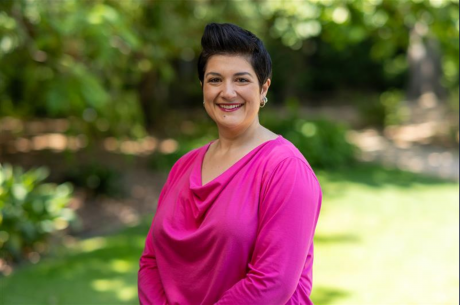In 1913 and 1917, a total of 75 tombs were excavated from an ancient burial ground near the modern village of Lapithos on the north coast of Cyprus. The tombs dated to the Middle Bronze Age, (about 2000 – 1700 BCE) but for various reasons the work was never published.
Dr Jennifer Webb from the Department of History and Archaeology at La Trobe University has been working on a project to publish the finds from these tombs, in collaboration with the Cyprus Department of Antiquities and staff from the Cyprus Museum.
“My project began in 2016, and I’ve spent six weeks annually at the Cyprus Museum with a small team from Australia,” says Dr Webb. “Post-excavation analysis is arduous and drawn-out, and in the instance of these tombs the results have never been analysed. The finds include over 1000 objects of copper and bronze and over 3000 pottery vessels. The largest tomb contained over 400 grave goods.”
The tombs contained skeletal remains of the dead, pottery vessels, metal tools, ornaments, and weapons. Most tombs were used for multiple burials, in some cases up to ten deceased per tomb.
“Over the years, some of the labels have come off the objects or have been eaten by insects which poses another challenge,” says Dr Webb. “I’ll be lucky if I can identify half of them. But then again, because I have the original inventory list, I know exactly what was found in each tomb even if I can’t locate that object.”
Dr Webb highlights the importance of publishing the finds from Lapithos, as excavations have not been possible in the area since the Turkish occupation of this part of Cyprus in 1974. Research on material found before 1974 currently offers the only information available to understand this region’s history.
“The systematic study and full documentation of the Lapithos pottery assemblage conducted by Professor Webb opens a wide window to the past, offering new knowledge about some of the finest ceramics of prehistoric Cyprus,” says Dr Maria Dikomitou-Eliadou, a Post-Doctoral Researcher in the Department of History and Archaeology at The University of Cyprus and one of Dr Webb’s colleagues.
“Hundreds of ceramics have been revived by this vigorous interdisciplinary study that seeks not only to document them in detail but also to understand the mechanisms of their production and distribution.”
The north coast of Cyprus was particularly important in the Middle Bronze Age, as ships sailing the nearby trade routes carried raw metals such as copper and tin, and other commodities. Lapithos, which was a coastal settlement, played a part in this trade, supplying passing ships with copper from the mountains of Cyprus. It also imported tin, gold, silver and other precious materials.
“So far our team has drawn, photographed and described material from about 50 of the tombs,” says Dr Webb. “This has resulted, to date, in two large volumes, published in 2018 and 2020. Post Covid-19, when we are able to return to Cyprus, we will document the remaining tombs and commence the final volume.”


